Roof garden ideas – 10 stylish ways to make the most of your rooftop no matter what the size
Got a roof? Transform it into an inviting oasis with these stylish roof garden ideas...
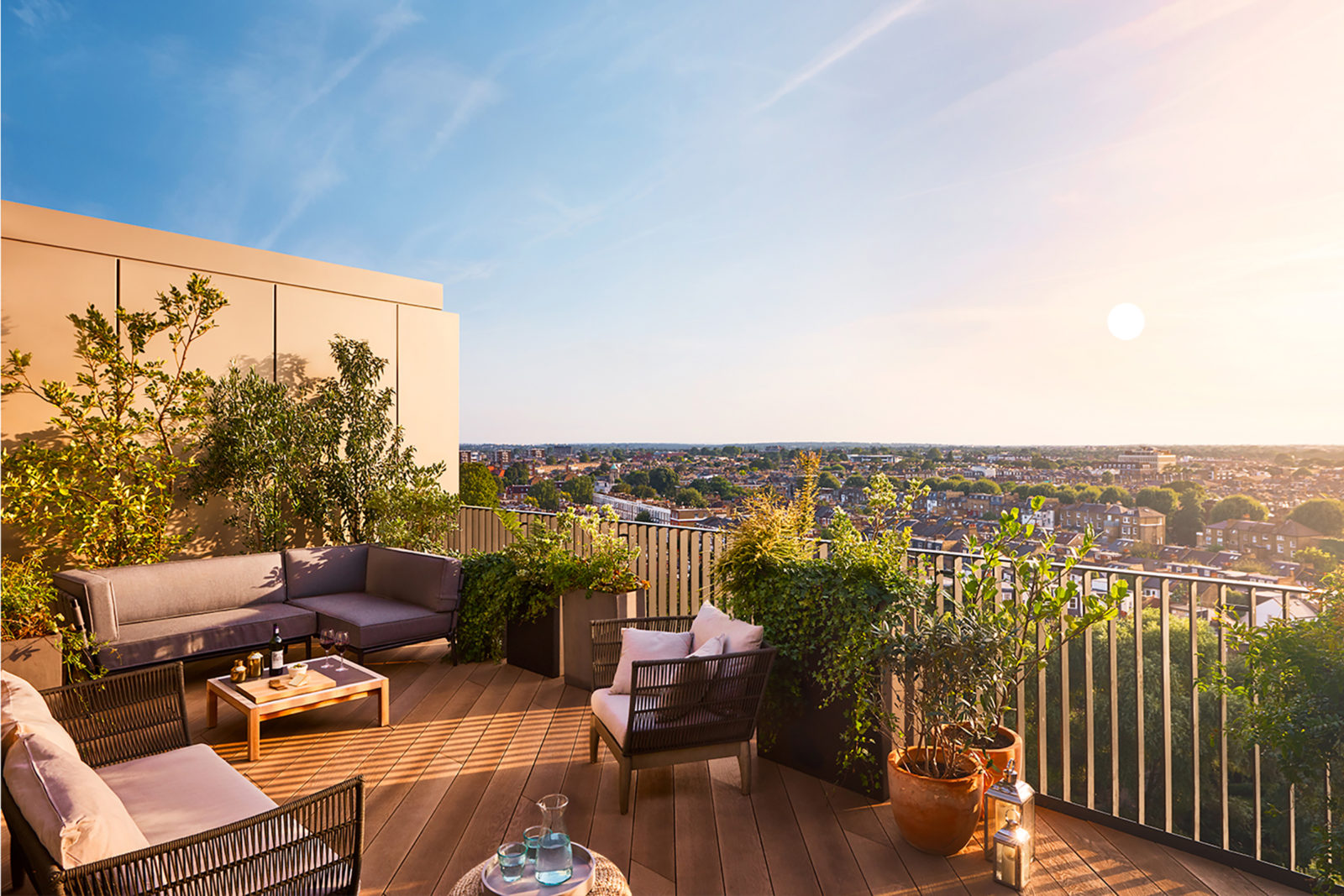
There is something so glam about a roof garden. Sure they might be kind of awkward to design and you have to come up with some pretty creative roof garden ideas to make the most of them, but done right they can be even more of an asset that a traditional backyard. What backyard can offer alfresco drinks with a fabulous view?
'Having a rooftop garden is a great way to increase your style of living and the value of your home.' explain NY based exterior designer The Manscapers. 'For those of us in urban settings, we often don't have much of a yard so taking advantage of your rooftop to create a garden can be the exact escape needed. There are also less mosquitos on a rooftop garden. So with some shade from a pergola or an umbrella and a nice breeze it’s an oasis to take you outside on your own rooftop.'
Sounds dreamy. And to prove just how much of an asset a rooftop garden can be, we've rounded up plenty of real-life examples that will help you make the most of your space no matter what the size...
1. Pick plants that will thrive on a roof top
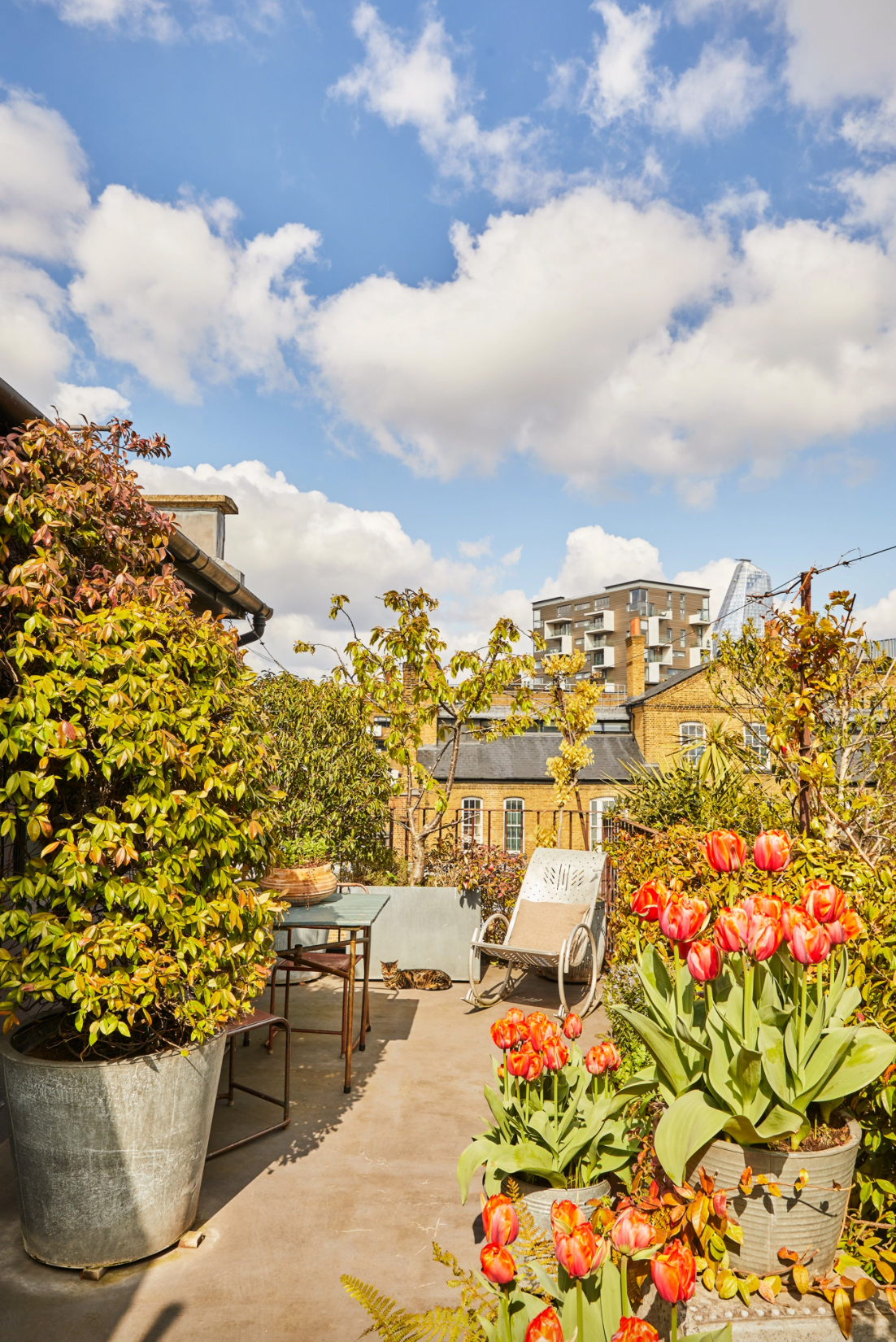
The main difference between planning planting for a roof terrace and a backyard is you can't plant into the ground. Therefore whatever you do plant, whether they are in pots, containers, or raised beds can't rely on the ground as a source of water, so they will be solely relying on you and the weather. This is what will determine what plants are best for a rooftop garden. It will depend on your climate but more often than not, think drought resistant and sun-loving.
'For any rooftop garden it’s important to make sure you have good irrigation first. Rooftops get a lot of sun and get very hot in the summer so no matter how often you think you will be able to water it will never be enough to satisfy your plant needs.' explain The Manscapers.
'We like to plant sun-loving plants that transport you to a garden in the sky. Some of our favorites are ornamental grasses such as Mexican feather grass and fountain grasses. To give some color we like to plant perennials that bloom throughout spring summer and fall giving pops of color that change through the seasons. Some of our favorites are Verbena, Liatris Blazing Stars, and Lavender for scent and color.'
2. Create a wild retreat with naturalistic planting
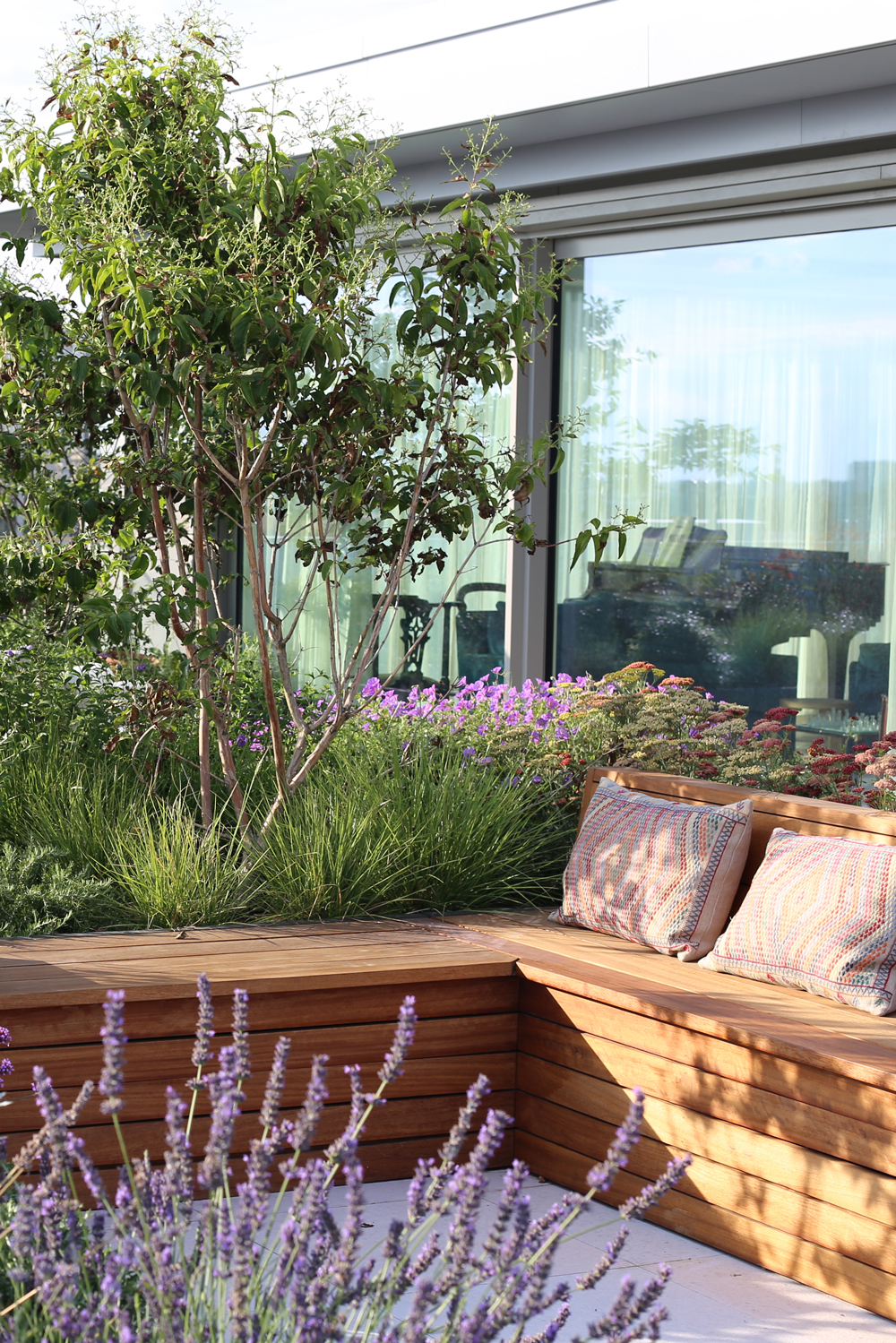
One of this year's biggest garden trends is the emergence of 'rewilding', which is all about allowing plants to lose their manicured neatness without letting them take over. Free-flowing plants help to give sleek, minimalist gardens a more relaxed, informal feel.
This meadow inspired city roof garden is a prime example. Designed by Aralia's Alastair Henderson, this eighth-floor city roof garden feels immersive and naturalistic thanks to wildly planted garden borders.
Despite neighboring blocks, the city roof garden feels private thanks to the layered planting and carefully placed trees. The main planting included osmanthus hedging with its rich jasmine-scented flowers in mid-spring as well as several trees; amelanchier (with beautiful blossom in March), small olives and multi-stem heptacodium trees that flower in autumn and are beloved of bees. Dotted in between are ilex balls, pittosporum and Pinusmugo – a tough, slow-growing shrub.
3. Turn a rooftop into an outdoor living room
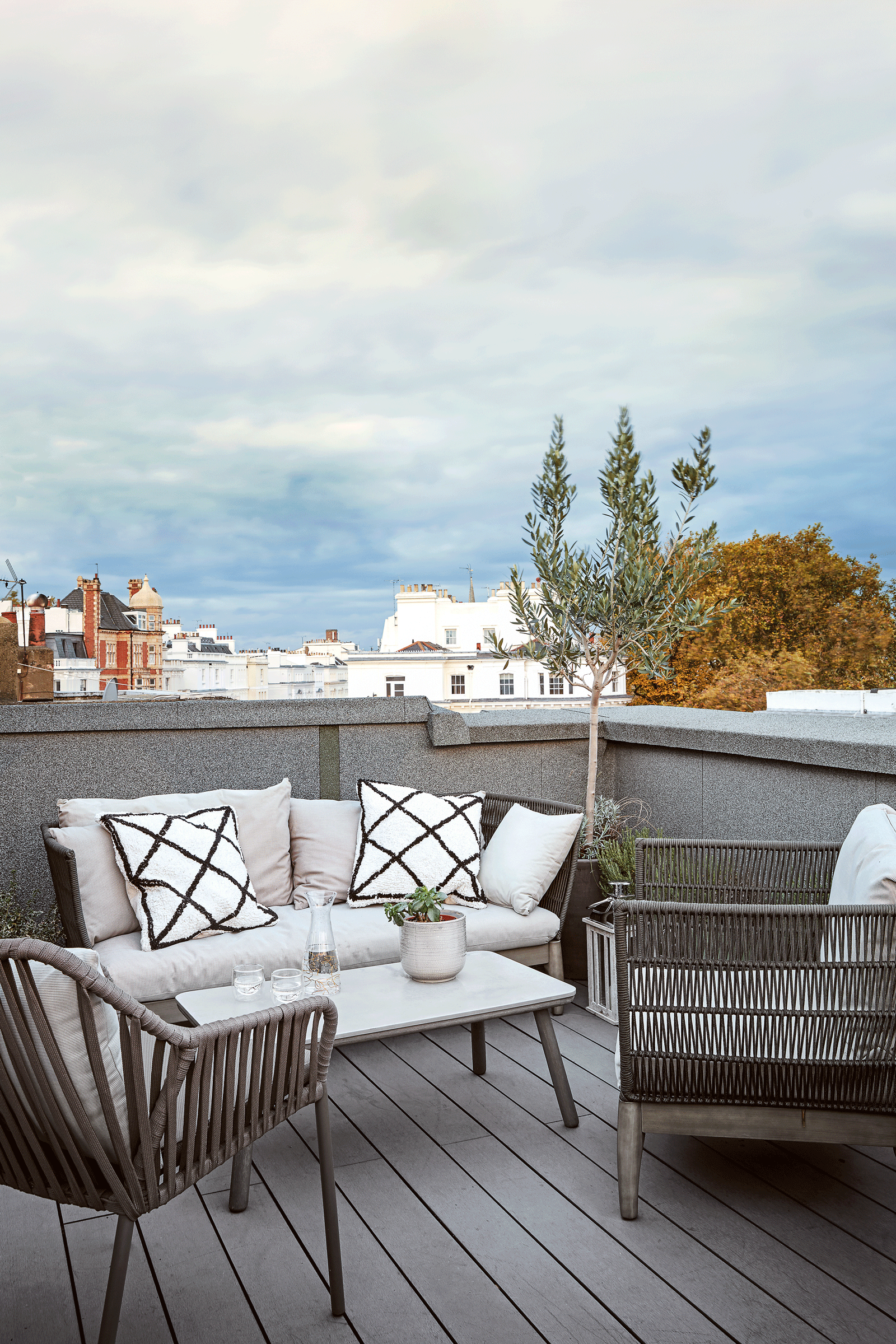
That whole indoor/outdoor living vibe has been huge in recent years. No longer is it enough to just drag out the old plastic table and chairs, now modern garden furniture is about creating a whole room outside – decor and accessories included.
And this trend lends itself to roof gardens, especially if you are tight on space so don't have the room for tones of plants or if you are after low-maintenance garden ideas. Treat your space as you would a living room, add a sofa, armchairs, a coffee table, lighting, and an outdoor rug so you create an extra room with a view.
You could soften the space slightly and add some privacy with the best trees to grow in pots. Olive trees not only thrive in a container but add a Med vibe to any space, so as you sip an Aperol you could almost be in a rooftop bar in Ibiza (we said almost...).
4. Add privacy to a roof garden with greenery

5. Add a compact outdoor kitchen

An outdoor kitchen can be a real asset to a garden, whether it's a ground-level or 11 stories up. They create the ultimate entertaining space, one where you aren't constantly running indoors to bring out drinks or hauled up in the kitchen while everyone else is enjoying themselves outside. With an outdoor kitchen, you get to be part of the party while you cook – see it as an elevated BBQ.
This apartment in Paris is crowned with a tiny roof garden. Yet despite it being compact, it fits a lot in. Alongside the outdoor kitchen is a formal dining space and then tucked around the corner is a small outdoor living room for more relaxed gatherings. The plants dotted around add all the greenery that's needed and the fencing zones the space – a practical idea and it makes the roof feel bigger too.
6. Or build in a fire/pizza oven

If building a kitchen on your rooftop isn't realistic, consider other outdoor heating ideas like a fire pit or a pizza oven. If you are working with a small space, so square footage is extra valuable, consider a wall-mounted option.
In this rooftop garden, the side of an unused chimney breast has been turned into a pizza oven. Far prettier than a bulky BBQ, a pizza oven could be a better option if you like a more subtle rustic look, and often you can use them to cook more than just pizza too.
7. Add plenty of depth to allude to a larger space
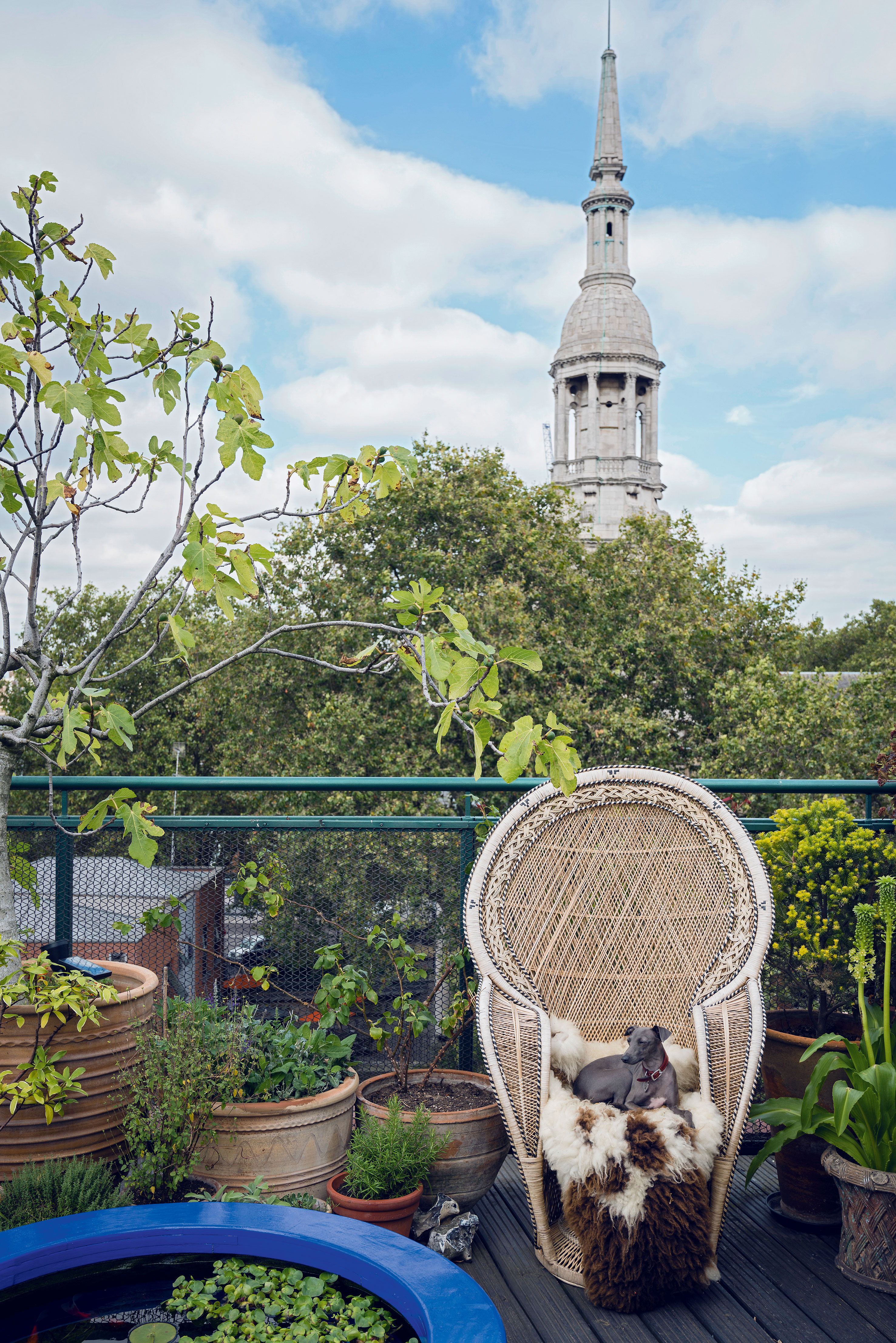
By their very nature, roof gardens tend to be on the smaller side. But all the same tricks apply when making a small garden look bigger, you can still create the allusion of more space. Adding plenty of planting around the edges of your roof garden is a really simple one. This will blur the edges of your space and make the boundaries less clear, especially if there's greenery beyond your roof garden, you can kind of... borrow space then.
Kristina suggests that 'Mirrors are great for adding a sense of depth and they look so great when surrounded by plants in pots, maybe with a honeysuckle or rose trailing across the glass. Another good trick to include some big elements even though the space is small - one large container with a big plant is more effective than tons of tiny pots dotted around.'
8. Consider adding a rooftop conservatory
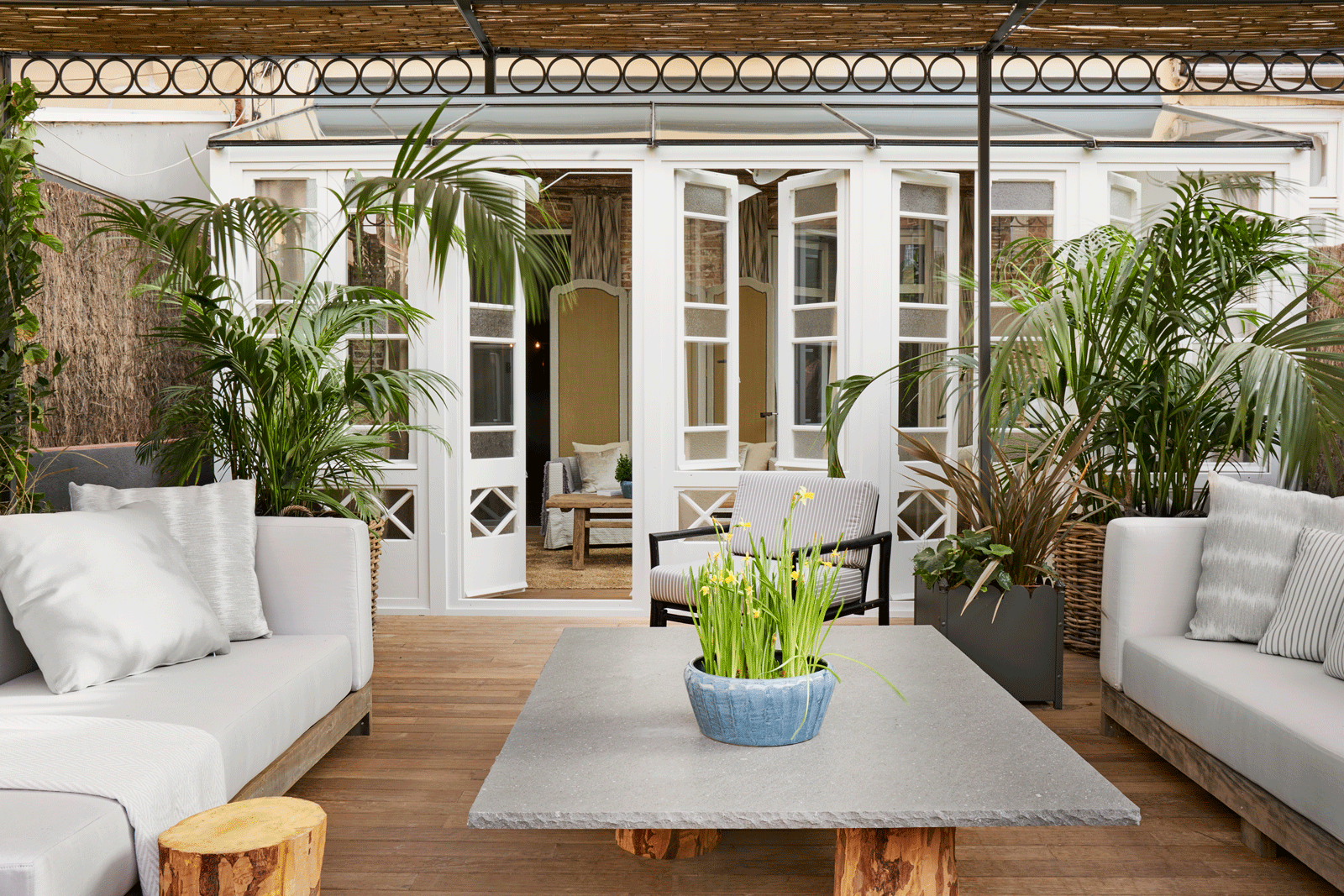
Linking the indoors without is at the top of so many homeowners' agendas, and we get it. That seamless flow between a kitchen or living room with the outside is truly glorious in the warmer months. No this blurring of inside and outdoors might seem unachievable when you don't have a backyard, but it can be possible to create when you have a roof garden too. As this modern home demonstrates...
French doors swing open during warmer weather, taking you from living room to roof terrace in one step. The roof garden features a covered area too, perfect for shade as well as drizzle and the space can be used all year round.
9. Try out container gardening

Container gardening is a city dweller's dream and as such lends itself perfectly to rooftop gardens adding color, texture, interest and of course greenery to even the smallest of spaces.
The best container garden ideas are ones that use a whole myriad of different size, shapes, and materials of pots and container. This mix is also what helps give the container garden depth and not feel like a bunch of plants in uniform pots but a beautiful and intriguing display that looks natural.
Choose sleek and contemporary pots and mix them with traditional terracotta designs. And combine tall and slime shapes with large round designs and fill in any gaps with an array of tiny pots.
10. Give a rooftop garden structure with raised beds
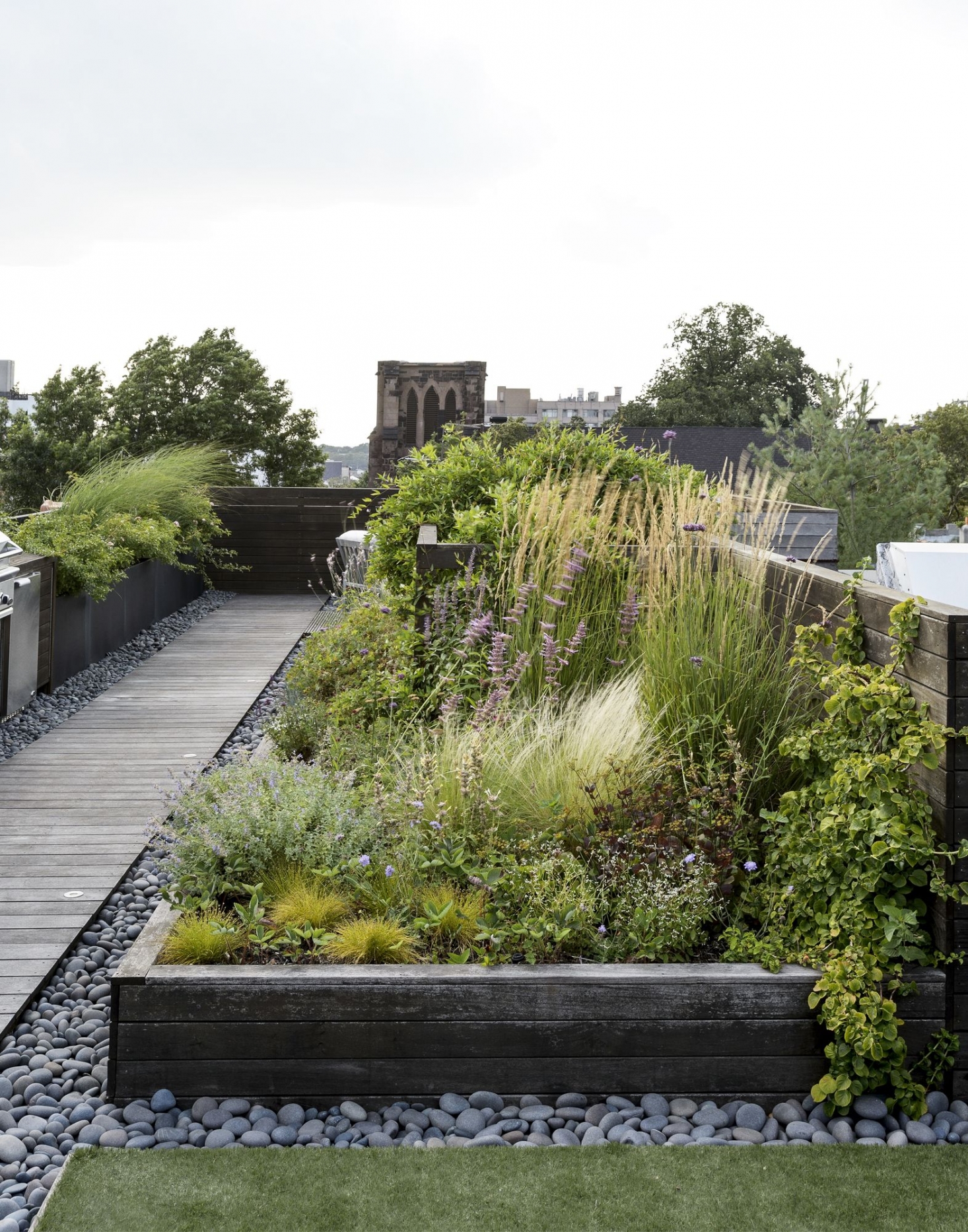
As we mentioned at the beginning, the main difference between a rooftop garden and a ground-level garden is you can't dig down. But you can dig up. Raised beds are the ideal way to add borders to a rooftop to give a more traditional 'backyard' feel.
Treat your raised beds as you would any other garden border, you want them to be full, have depth, a mix of textures and heights and colors and look good all year round. You could even start a small vegetable garden and live the good life in the city.
We love how raised beds give this roof terrace more structure, it doesn't feel like a roof terrace but rather a beautiful mature garden.
What are the best plants for a roof garden?
'Plants should ideally be wind and drought tolerant and also cope with sun, or shade, depending on their position. Clifftop maritime and seaside plants are best for exposed roof gardens or balconies. Alpines, squat pines, dwarf fan palms, mounding shrubs like hebe and Mediterranean herbs including thyme and lavender are ideal and naturally thrive in such typically harsh conditions.' explains expert gardener and founder of Matt James Landscape & Garden Design, Matt James.
'Avoid bamboos and thirsty plants like bananas, even with protection from prevailing winds – these dry out double quick. It is likely that there won’t be room, or structural support, for diverse collections of plants in pots so choose key specimens which look good for as long as possible. Evergreen varieties are most valuable.'
'Wind exposure is a common problem on roof gardens so for that reason, anything with a big ‘sail area’ is out, which unfortunately means many trees. They’ll either rock lose and won’t establish well in their pots, or the foliage will soon become shredded and unsightly.' adds Matt.
'Also, trees and sizable shrubs for screening for example need pretty big pots in particular, which may be simply too heavy when you factor in the load bearing capacity of many balconies and roof terraces. Where there is room, some protection may be afforded in the lee of wind tolerant shrubs like flax (Phormium) and daisy bush (Olearia) for pine trees or holm oak, but this strategy will only work for small specimens.'
How can you add privacy to a roof garden?
'Solid barriers are a poor choice. Firstly, they may well block views to the wider landscape, and secondly strong gusts will slam against them and burst over the top with considerable force.' continues Matt.
'Instead, porous or perforated sailcloth, trelliswork or hit-and-miss cedar battens, all filter the wind, whilst offering privacy. Fixed shade sails may work, so too a temporary parasol. Both will also offer shelter from strong sun. Tall sturdy pots may help to block prying eyes but again there’s the weight issue to carefully consider.'
Be The First To Know
The Livingetc newsletters are your inside source for what’s shaping interiors now - and what’s next. Discover trend forecasts, smart style ideas, and curated shopping inspiration that brings design to life. Subscribe today and stay ahead of the curve.

Formerly the Digital Editor of Livingetc, Hebe is currently the Head of Interiors at sister site Homes & Gardens; she has a background in lifestyle and interior journalism and a passion for renovating small spaces. You'll usually find her attempting DIY, whether it's spray painting her whole kitchen, don't try that at home, or ever-changing the wallpaper in her entryway. She loves being able to help others make decisions when decorating their own homes. A couple of years ago she moved from renting to owning her first teeny tiny Edwardian flat in London with her whippet Willow (who yes she chose to match her interiors...) and is already on the lookout for her next project.
-
 Burl Wood Decor Is 2025’s Most Coveted Comeback — Here’s How to Get the Storied Swirls for Less
Burl Wood Decor Is 2025’s Most Coveted Comeback — Here’s How to Get the Storied Swirls for LessIrregularity is the ultimate luxury, but you don’t need an antiques dealer to find it
By Julia Demer Published
-
 5 Garden Features That Instantly Add Value to Your Home — While Making Your Outdoor Space More Practical, too
5 Garden Features That Instantly Add Value to Your Home — While Making Your Outdoor Space More Practical, tooGet to know all the expert tips and tricks for making your backyard a standout selling point for your home.
By Maya Glantz Published
